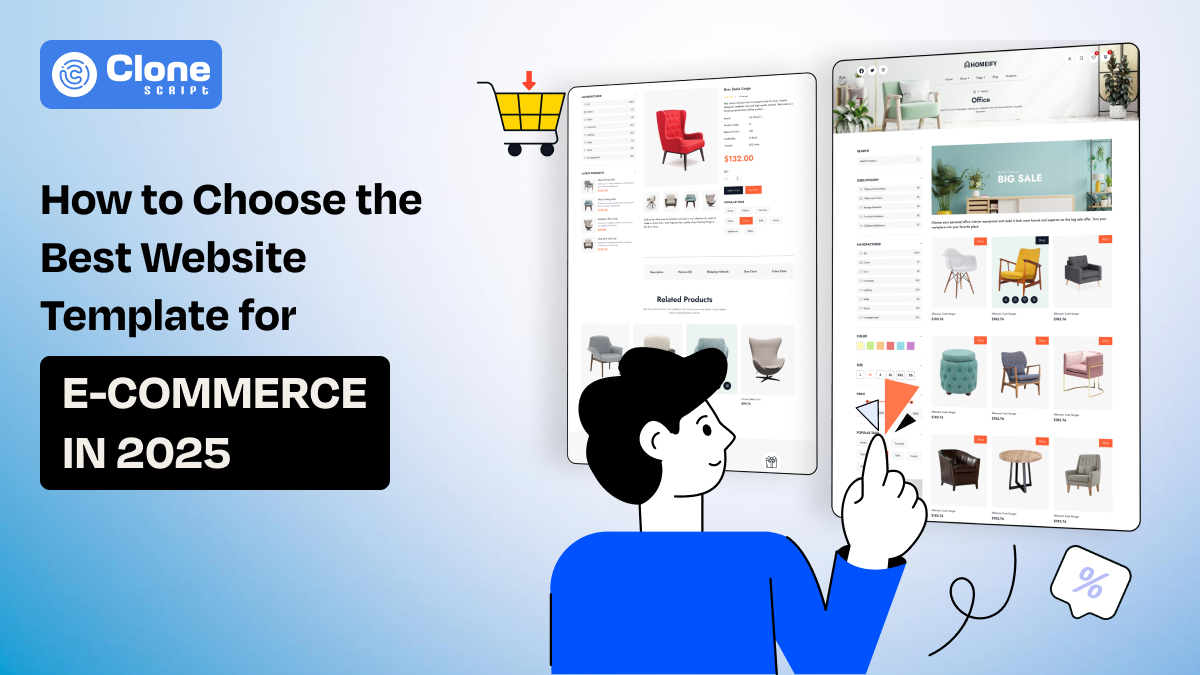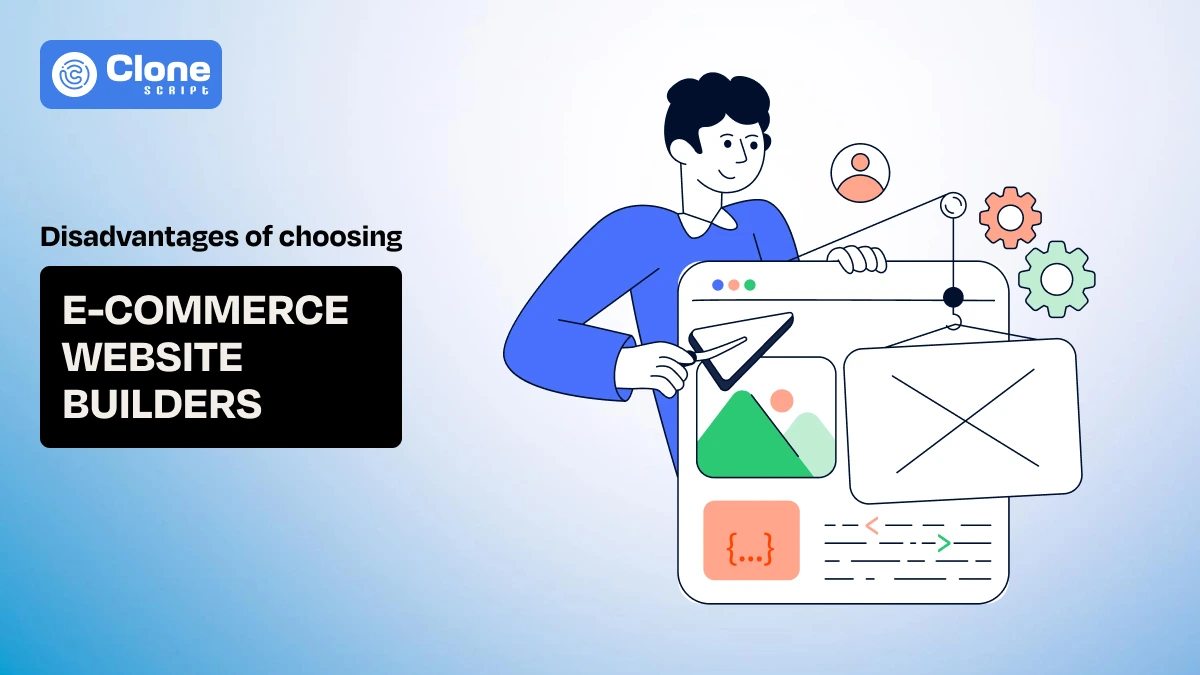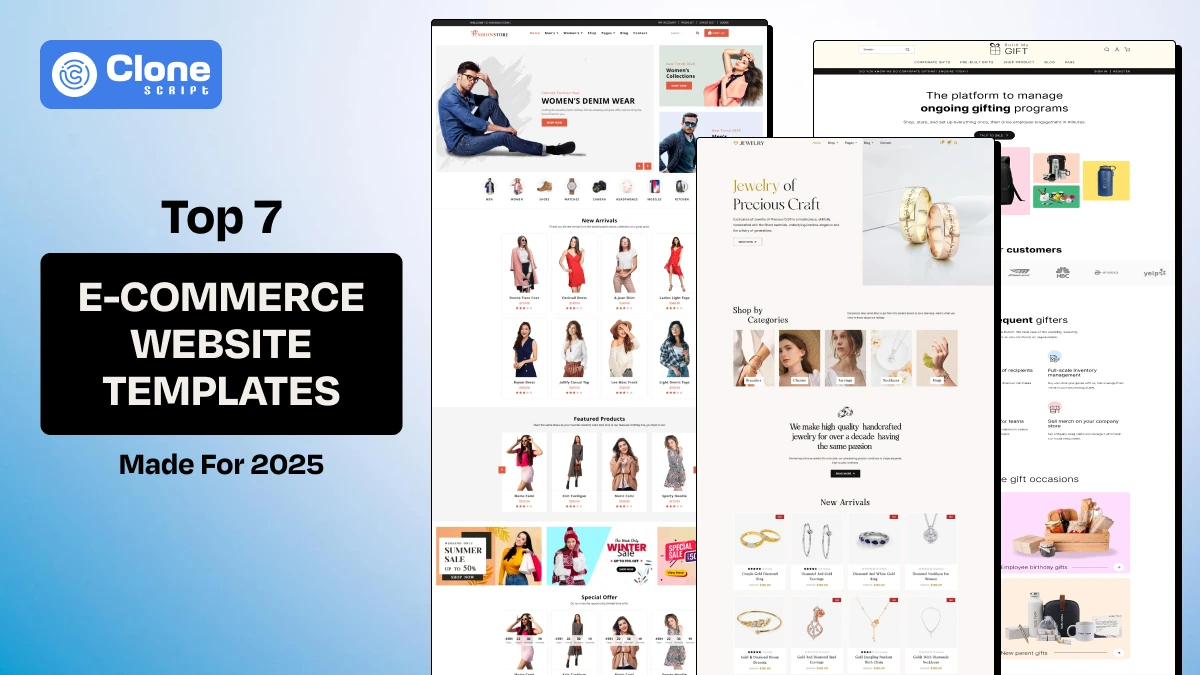How to Choose the Best Website Template for E-commerce in 2025
Online shopping is growing fast. Sales are expected to reach over $6 trillion this year, a big increase from last year. This means many businesses are selling things online, from clothes and jewelry to electronics and health products.
If you're starting a new business and don't have a lot of money to spend on website development, using an e-commerce website template is a good option. Templates are like pre-made designs that you can use to quickly create your online store. This can save you time and money, and help you get your professional website ready faster.
In this article, we’re going to talk about how to choose the best e-commerce website templates by considering the key factors. Also, you will see the best templates useful for your online store development with proven tips.
Key Factors to Consider When Choosing an E-commerce Template
When selecting a template you have to consider certain factors helping to make proper decisions. These factors are helpful for e-commerce website development. Here is the list of them:
-
Functionality
-
Design and Aesthetics
-
Features and Integrations
Now, let’s understand these factors in detail.
A. Functionality
Having a basic functionality in the website template ensures that users can easily complete their preferred action whether it’s just searching for the best product or adding it to the cart.
1. Product Catalog & Display
The product catalog is the heart of your e-commerce website. Look for templates that offer:
-
Easy navigation and filtering options: With a robust menu and filter options, customers can quickly find products. This saves time in finding the correct match for their preferences.
-
High-quality product images and zoom features: In online shopping visual appeal drives sales. Templates that support HD images and zoom options enhance user experience. It can help users to visualize how the product can be helpful for them.
-
Product variations: Display options for sizes, colors, and other attributes to improve customer satisfaction. For example, an apparel e-commerce template has the functionality to add your products with variations.
2. Shopping Cart & Checkout
Without a shopping cart and checkout functionality, it’s not possible to imagine a successful e-commerce business as it is useful to reduce cart abandonment rates:
-
Seamless checkout process: Look for templates that support multiple payment gateways such as PayPal, Stripe, Amazon Pay, Razorpay, CCAvenue, and Authorize.Net. This makes sure your e-commerce website offers a hassle-free experience for completing the checkout and processing the online payments.
-
Clear order summaries: Transparently showing shipping costs, tax calculations, and total amounts will help customers know what they’re paying. It is important for you as well to remain flexible regarding pricing.
-
Guest checkout options: With guest checkout options you can cater to customers who prefer not to create accounts on your shopping website. This will help privacy-concerned people who don’t want to share their info with your business.
3. Inventory Management
Efficient inventory management is necessary for e-commerce startups as it relates to brand reputation and goodwill creation. A website template with an integrated inventory system will be helpful to handle the stocks in high-demand times such as Christmas festive seasons, New Year celebrations, Valentine’s Day, etc.
-
Integration with inventory systems: Seamlessly integrating with inventory tracking tools allows you to monitor stock levels in real-time. This data empowers informed decisions on reordering, preventing stockouts, and ensuring timely fulfillment.
-
Low stock alerts: Automated alerts notify you when inventory is running low, enabling proactive replenishment orders and minimizing the risk of lost sales due to stock unavailability.
-
Backorder options: Offering backorder options allows customers to place orders for out-of-stock items. This not only retains potential sales but also builds customer loyalty by demonstrating responsiveness and a commitment to fulfilling their needs.
4. Search & Filtering
Most of the successful e-commerce website such as Amazon and Flipkart has efficient search bars and filtering options to significantly enhance the online shopping experience. Thus, you have to choose that kind of template offers advanced options for product searches and filtering.
-
Robust search functionality: It supports autocomplete to display popular results instantly. Also, the voice-enabled search functionality helps customers experience hands-free shopping on their smartphones and preferred devices.
-
Advanced filtering: Enable sorting by price, category, and brand to help users find exactly what they’re looking for. Integrating AI into your e-commerce platform will automatically analyze user behavior and recommend better products increasing the chances of confirmed purchases.
5. Customer Reviews & Ratings
According to a study by BrightLocal, 98% of consumers read online reviews before making a purchase decision. This highlights the significant impact of user-generated content, such as reviews and testimonials, on consumer trust and purchasing behavior. So, check if the picked website template has any rating system or needs to integrate from third-party tools.
-
User-friendly review systems: This encourages feedback with simple-to-use forms from the product users and share their experience.
-
Review displays: By showcasing ratings on product pages helps to increase credibility and feels genuine to trust.
B. Design & Aesthetics
In an e-commerce website template don’t overlook the design visuality and user experience. Ultimately, the online store is your source of product offerings and it should be more personalized appeal to users.
1. Visual Appealing UI Design
Keep in mind your e-commerce website UI design should captivate visitors from clicking the buttons to shifting layouts, everything should optimized properly.
-
Modern and Professional Design: Select templates with contemporary aesthetics UI designs that reveal your brand's image and values. A polished look builds a connection with your audience.
-
Customizable Color Schemes and Fonts: Consistent use of colors and fonts reinforces brand recognition and creates a cohesive user experience. Therefore, choose the template that fits your e-commerce brand's unique visual identity.
-
High-Quality Visuals: Utilize high-resolution images and professional-quality graphics throughout the website, from the homepage to the checkout page. Visually appealing content enhances user engagement and leaves a positive, lasting impression on your visitors.
2. User Experience (UX)
The user experience of an online shopping website is important for retaining customers. As of now, most e-commerce businesses are taking advantage of cutting-edge technologies for user management to order fulfillment. Your website should also optimized for the best UX. When selecting the template check the mentioned design:
-
Intuitive navigation: Make browsing effortless with clear menus from registration and onboarding to completing the checkout and order tracking. No glitches should be present there.
-
Minimal distractions: Reduce clutter and focus on conversions. Avoid too many pop-ups on each page that relatively counts as a bad practice of user experience. Also, don’t look to close the deals but try to make an emotional connection with each user through showcasing your product use cases and advantages with tutorials and images.
-
Mobile-first design: Mobile-friendly e-commerce website template selection is just like having VIP access to the lounge as Google prioritizes mobile-first indexing. So, you can create a responsive website for online shopping with minimal costs.
C. Features & Integrations
Most of the e-commerce website templates have built-in features and integration options for various tools such as marketing and online chatting.
While other basic templates have generic features usually designed only for sales. Avoid these types of free templates to use for e-commerce website development, purchase premium templates.
Here is the list of features to look at in templates.
1. Marketing & Sales Features
To boost your e-commerce website presence in the market, you have to adopt online marketing strategies. Check the mentioned features:
-
Email marketing integration: It connects with tools like Mailchimp to nurture leads and schedule promotional and educational emails.
-
Social media sharing: It can increase reach with integrated sharing buttons helpful to share products directly from the site and improve brand awareness efforts.
-
Promotions and discounts: Templates with built-in coupon systems and redemption systems can attract customers. From there you can start loyalty programs to increase customer engagement rate.
-
Live chat support: Chatbots and live chat features are essential for answering visitor questions and providing 24/7 website monitoring. Implementing AI in CX can enhance efficiency and personalization, leading to improved user satisfaction.
2. SEO & Performance
SEO refers to Search Engine Optimization. It’s a totally organic marketing strategy used by most e-commerce businesses. However, launching a site does not permit you to rank higher for you have to follow some guidelines. In this case, if you’re building an e-commerce website through templates then it’s not a tense situation as templates are made with the guidelines.
Here’s the overview to consider for choosing a template.
-
SEO-friendly code: Look for templates with clean, structured HTML. Also, inspect if schema markup validation exists or not, if not then ignore to buy that template. You can check the template’s schema code through Google Rich Results Test, a free tool.
-
Fast loading speeds: Search engines like Google always prioritize better user experience. The website loading speed is a leading ranking factor. So, pick a template that loads quickly and doesn’t have any issues. You can inspect the loading speed through PageSpeed Insights where each metrics are displayed in real-time.
-
Mobile-friendliness: Web pages optimized for mobile devices rank higher on Google. Also, AMP (accelerated mobile pages) is creating opportunities to get a relevant position in search results apart from those pages not properly designed for smartphones.
3. Security
In the operation of business customer privacy and safety is very important as well as enterprise information. As you depend on the website templates make sure it has the following features:
-
SSL certificates: Secure Socket Layer (SSL) certificate encrypts the data transferred between the company and users. It is recommended by most of the search engines.
-
Fraud protection: To ensure your e-commerce website doesn’t include any vulnerabilities, make sure the template you picked has 2FA or PIN features. This prevents any unauthorized account accessibility.
Popular E-commerce Website Templates
Choosing the right e-commerce website template is equally important. Here are some popular templates we present for you and their standout features:
Pick the relevant e-commerce website template from these mentioned ones. If you need a custom template you will raise a request by contacting us.
Tips for Choosing the Right E-commerce Template
Here is the list of tips while choosing an e-commerce store template online:
-
Define Your Target Audience and Brand Identity: Understand your customers’ preferences and select a template that resonates with your brand.
-
Set a Budget: Decide how much you’re willing to spend. Premium templates often offer better features and support compared to free ones.
-
Read Reviews and Compare Features: Look for user feedback and weigh the pros and cons of each template.
-
Consider Platform Ease of Use: Choose a platform (such as Shopify, Magento, WordPress, BigCommerce, PinnacleCart, Shift4Shop, and Wix) that you and your team can easily manage without extensive technical expertise.
-
Test the Template Thoroughly: Before finalizing, explore the demo version to ensure it meets your needs.
Conclusion
Selecting the right e-commerce template sets the stage for your startup’s success. By prioritizing functionality, design, and features, you can create a seamless shopping experience that drives conversions.
Explore the templates discussed, and choose one that aligns with your business goals.
Ready to take the next step? Start exploring these website templates today and lay the foundation for your e-commerce success.
FAQs
-
What are the best e-commerce templates for startups on a budget?
HTML, Bootstrap, Tailwind CSS, and React templates are good enough choices to build an e-commerce site on a budget. For a WordPress platform, integrating a WooCommerce theme will be ideal.
-
How important is mobile optimization for e-commerce templates?
Extremely important. Over 50% of online shopping happens on mobile devices, making mobile-friendly templates essential.
-
Can I customize an e-commerce template without coding skills?
Yes, most templates offer drag-and-drop customization tools so you can modify each element according to your e-commerce brand.
-
How do I know if a template is SEO-friendly?
Check for features like clean code, meta tag editing, and fast loading speeds in the template description. Also, test the demo version through PageSpeed Insight and Schema Markup Validation to know if the template is SEO-friendly or not.
-
Should I prioritize design over functionality?
Both are equally important. A visually appealing design attracts customers, but functionality ensures they stay and convert into loyal customers. Balance the website design and functionality when making the purchase.
-
I bought an e-commerce HTML template, does my WordPress website support it?
Yes, you can generally use an e-commerce HTML template with WordPress, especially when used in conjunction with the WooCommerce plugin. WooCommerce is designed to work with custom HTML/CSS, allowing for greater flexibility in website design.
-
Do I have to purchase a template for my Shopify store?
No. Shopify offers a vast library of professionally designed themes, many of which are free or available at affordable prices. So, purchasing a template for Shopify is worthless. You can hire a Shopify developer to create a unique theme for your store.
 BTC - Bitcoin
BTC - Bitcoin
 USDTERC20 - USDT ERC20
USDTERC20 - USDT ERC20
 ETH - Ethereum
ETH - Ethereum
 BNB - Binance
BNB - Binance
 BCH - Bitcoin Cash
BCH - Bitcoin Cash
 DOGE - Dogecoin
DOGE - Dogecoin
 TRX - TRON
TRX - TRON
 USDTTRC20 - USD TRC20
USDTTRC20 - USD TRC20
 LTC - LiteCoin
LTC - LiteCoin







